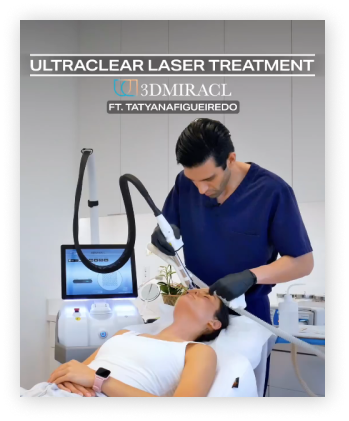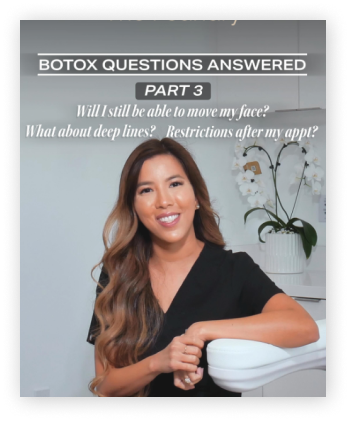While dermal fillers are widely recognized for smoothing wrinkles and restoring youthful contours, what’s less often discussed is how their performance varies not just by product—but by biology, behavior, and placement. For patients seeking more than surface-level results, understanding the true mechanics and longevity of each filler is essential. This guide dives deeper than typical overviews, equipping you with the nuanced insight needed to make confident, long-term decisions about facial rejuvenation.
What Are Dermal Fillers and How Do They Work?
Dermal fillers are often described as volumizers—but their true role in facial rejuvenation goes far beyond simply “filling in” lines. Each product is a specialized tool, designed to interact with skin structures, fat pads, and connective tissue in distinct ways. For example, hyaluronic acid-based fillers bind to water, creating both immediate plumpness and subtle shifts in light reflection that restore skin luminosity—a detail often overlooked. Others, like Renuva, stimulate the body to replace lost volume with its own fat-like tissue, which changes the texture and responsiveness of the treated area over time. What’s rarely discussed is how filler viscosity, elasticity (G prime), and cohesivity dictate not just placement technique but also how naturally a filler moves with expression. These biomechanical properties are crucial in ensuring a result that ages gracefully, rather than stiffening or distorting over time—a critical consideration in advanced aesthetic planning.
Commonly Used Dermal Fillers: What Sets Each One Apart
Not all dermal fillers are created equal—nor should they be used interchangeably. The most effective treatments come from a nuanced understanding of each product’s rheology, tissue integration, and degradation behavior over time.
Restylane: Versatility and Natural Movement
Restylane’s varied formulations offer different densities and lifting capacities, making it a workhorse for treating fine lines, lips, and tear troughs. Its granular texture allows for precise sculpting, particularly in mobile areas, and its particle-based structure tends to integrate well with thinner tissue layers—minimizing overcorrection in delicate zones.
Volux: Sculptural Definition for the Lower Face
Volux is engineered for structural support in high-tension areas like the jawline and chin. With one of the highest G prime scores among HA fillers, it resists compression and maintains shape, making it ideal for contouring where bone loss or soft tissue sagging occurs.
Vollure & Volbella: Soft, Flexible Refinement
These fillers are designed for subtlety. Vollure offers medium elasticity and is often chosen for nasolabial folds due to its balance between spread and firmness. Volbella, with its ultra-smooth consistency, excels in perioral lines and lip hydration, favoring movement over projection.
Renuva: Regenerative, Not Just Restorative
Unlike HA fillers, Renuva doesn’t sit inertly beneath the skin. Instead, it acts as a scaffold, triggering the body to regenerate adipose tissue. This makes it uniquely suited for patients experiencing facial fat loss, offering results that evolve rather than fade—and potentially improve skin quality as native tissue regenerates.
Duration of Effects: How Long Do Dermal Fillers Really Last?
While most sources provide standard timelines—six months for one filler, 18 for another—the reality is far more complex. Duration is influenced not only by the filler type but also by where it’s placed, how it interacts with surrounding tissues, and even how much facial movement occurs in the area. For instance, Volbella used in the lips may metabolize faster than the same filler used in tear troughs due to higher mobility and blood flow. Renuva, which prompts the body to regenerate fat, doesn’t “fade” in the traditional sense at all—it evolves with your biology, which means its longevity may extend well beyond typical HA fillers. Additionally, subtle remnants of hyaluronic acid fillers can persist even after visible results diminish, influencing subsequent treatments. The visible timeline is just part of the picture; the biological presence of filler may outlast what’s seen in the mirror.
Strategic Use of Fillers for Volume Loss and Facial Balancing
Effective filler treatments go beyond spot-filling; they address the architecture of facial aging. Volume loss doesn’t occur evenly—it follows predictable patterns influenced by fat pad descent, bone resorption, and ligament laxity. Strategic placement considers not just where volume is missing, but how restoring it affects neighboring areas. For example, midface support with Restylane can lift heaviness in the lower face without touching the jawline. Volux can be used to re-establish mandibular definition, subtly correcting jowl formation. Renuva offers a distinct advantage when rebuilding areas of deep hollowness, as it restores soft tissue with biologically integrated fat-like volume. This layered approach—treating foundation, support, and surface—achieves true facial balancing and a more natural, cohesive result.
Factors That Influence Longevity
The longevity of dermal fillers isn’t simply dictated by the product itself. A number of individualized and anatomical factors impact how long results truly last—and why some patients may need touch-ups sooner than others. These lesser-discussed variables include:
- Metabolic Rate: Faster metabolisms break down hyaluronic acid more quickly, especially in highly vascular areas like the lips. Athletes and those with high physical activity may notice shorter duration.
- Treatment Depth & Placement: Fillers injected deeper, such as Volux along the bone, often last longer than those placed superficially, where mobility and exposure to enzymes are greater.
- Area of Injection: Dynamic regions (like the mouth) degrade filler faster due to constant movement, while static areas (like temples or mid-cheek) offer more stability.
- Skin Quality and Hydration: Well-hydrated, collagen-rich skin can help maintain filler integration and prolong smoothness, especially with HA-based products.
- Technique and Product Volume: Underdosing can lead to faster fading; skilled injectors consider not only how much filler to use, but how to layer it for sustained effect.
- Immune Response: Some individuals metabolize filler more rapidly due to subtle immune activation, which can be influenced by genetics, medications, or inflammation.
Side Effects and Safety: What You Should Know
While most patients experience only minor swelling or bruising, dermal fillers—especially when misunderstood or misapplied—carry nuanced risks often left out of standard consultations. Vascular occlusion, for instance, is rare but serious, and recognizing early signs (blanching, pain, or color change) is critical. Delayed-onset nodules or biofilm-related inflammation can appear weeks or months post-treatment, especially with improper sterilization or immune triggers. Interestingly, immune system fluctuations from illnesses or vaccines may temporarily alter how your body responds to filler, either accelerating breakdown or provoking swelling. Choosing a provider trained not just in injection but in facial anatomy and complication management dramatically reduces risk. Fillers are medical treatments—not beauty products—and their safety depends as much on the injector’s depth of knowledge as the product itself.
What to Ask Before Choosing a Filler Treatment
Before undergoing a filler treatment, ask questions that go beyond the usual “How long does it last?” For example: What anatomical layers are you targeting and why? or How will this filler behave as it degrades—will it disperse or compact? Understanding whether your injector uses ultrasound or vein-mapping techniques can also reveal their approach to safety and precision. Inquire about their plan for balancing asymmetries over time, not just at the first visit. Ask how they select filler types based on movement, elasticity, and skin thickness. A truly customized treatment isn’t just about facial goals—it’s about the injector’s ability to match those goals with the right tools, placed in the right planes, over time.
Conclusion
Dermal fillers offer far more than short-term aesthetic enhancement—they are tools for structural support, tissue regeneration, and long-term facial harmony when used with precision and intention. The key to lasting, natural-looking results lies in understanding how different fillers behave within the unique architecture of your face. Armed with this knowledge, you can make more empowered, confident decisions about your treatment journey. Whether you’re new to fillers or seeking to refine your approach, expert guidance makes all the difference. To learn which dermal filler is best for your goals, visit The Foundry in Pasadena or call (626) 240-1212 to schedule a personalized consultation with our expert aesthetic team.











